Contents  Published by LOAF Marketing Ltd 63 Long Acre, Covent Garden London WC2E 9JN Tel ++44 (0)207 212 9940 www.loafmarketing.co.uk All enquiries david@loafmarketing.co.uk First published 2009 Copyright Dave Trott 2009 The right of Dave Trott to be identified as author of this work has been asserted by him in accordance with the Copyright, Designs and Patents Act 1988. All rights reserved. Without limiting the rights under copyright reserved above, no part of this publication may be reproduced, stored in or introduced into a retrieval system, or transmitted, in any form or by any means (electronic, mechanical, photocopying, recording or otherwise), without prior written permission of both the copyright owner and the above publisher of this book except in accordance with the provisions of the Copyright Designs and Patents Act 1988. Any unauthorised or restricted act in relation to this publication may result in civil proceedings and / or criminal prosecution. This book may not be lent, resold, hired out or otherwise disposed of by way of trade in any form of binding or cover other than that in which it is published, without prior consent of both the copyright owner and the publishers. The views expressed in this publication should be taken as those of the author alone.
Published by LOAF Marketing Ltd 63 Long Acre, Covent Garden London WC2E 9JN Tel ++44 (0)207 212 9940 www.loafmarketing.co.uk All enquiries david@loafmarketing.co.uk First published 2009 Copyright Dave Trott 2009 The right of Dave Trott to be identified as author of this work has been asserted by him in accordance with the Copyright, Designs and Patents Act 1988. All rights reserved. Without limiting the rights under copyright reserved above, no part of this publication may be reproduced, stored in or introduced into a retrieval system, or transmitted, in any form or by any means (electronic, mechanical, photocopying, recording or otherwise), without prior written permission of both the copyright owner and the above publisher of this book except in accordance with the provisions of the Copyright Designs and Patents Act 1988. Any unauthorised or restricted act in relation to this publication may result in civil proceedings and / or criminal prosecution. This book may not be lent, resold, hired out or otherwise disposed of by way of trade in any form of binding or cover other than that in which it is published, without prior consent of both the copyright owner and the publishers. The views expressed in this publication should be taken as those of the author alone.
Printed in the European Union. A CIP catalogue record for this book is available from the British Library.  ISBN 978-0-9564357-0-5 Introduction For me there are two requirements from anything I read. I have to learn something. Or I have to be entertained. If Im not getting either of those two, why would I keep reading? The best advertising works because its creative.
ISBN 978-0-9564357-0-5 Introduction For me there are two requirements from anything I read. I have to learn something. Or I have to be entertained. If Im not getting either of those two, why would I keep reading? The best advertising works because its creative.
We can find creativity everywhere. And we can all learn from it wherever we find it. I can learn lessons about creativity from Mohammed Ali, Mike Tyson, Max Baer, Vince Lombardi, Billy Beane, Brian Clough, Tony Adams, Jackie Stewart, Bill Shankley, Ellen MacArthur, Napoleon Bonaparte, Horatio Nelson, Heinz Guderian, Michael Wittmann, Willy Messerschmitt, Woody Allen, George Carlin, Jackie Mason, Jo Brand, Rupert Murdoch, Richard Branson, Winston Churchill, Norman Tebbitt, Tony Benn, Pablo Picasso, Damien Hirst, Tintoretto, Orson Welles, Alfred Hitchcock, Emma Thompson, Clint Eastwood, Steven Spielberg, William of Ockham, Mary Wollstonecraft, Jean Paul Sartre, and Ernie Bilko. All of these guys said or did something that made me go, Wow, I wish Id thought of that. Just look at the cover of the Sergeant Pepper album. Thats The Beatles putting all their creative influences in one photograph.
And that was something I pored over at art school. Why did they like all those people? What was good about them? I wanted to know what I could learn from them. Whatever excites us will probably be something really clever. Itll be good to read. Although advertising can be very creative, it isnt the only form of creativity. Its applied creativity.
And there are lots of other forms of applied creativity. So where else can we find it being applied? What else took our breath away when we heard or saw it? And what can we learn from it? What can we take away and use? Join up the dots. Creative Mischief Theres a narrow line between humour and cruelty. As creatives, a lot of what we do rides on that edge. To be noticed, we need to do something different. To be different, we need to break the rules.
To get away with breaking the rules, we need to be clever. There it is. Were always trying to get away with something. To sail as close to the wind as we can without capsizing. For instance: Castlemaine lagers campaign, Australians wouldnt give a XXXX for any other lager. The poster campaign for French Connection UK: FCUK FASHION and FCUK ADVERTISING.
The shop in the Kings Road that sold brass front-door fittings, called Knobs and Knockers. The Suns headline when Tammy Wynette died, COUNTRY STAR TAMMY: D-E-C-E-A-S-E-D. Eddie Izzards joke, I come from a very traditional family. My grandad hanged himself on Christmas Eve and we couldnt take him down until January 5th. This is a naughty, schoolboy, playground sense of humour. It could explain why men outnumber women in creative departments.
It puts laughter above niceness. In the creative department, you can get away with anything, as long as its funny. When I worked at BMP, the Head of Television commuted in from Brighton every day. He started reading The Exorcist on the train. He said he thought it was the most evil book hed ever read. In fact, he said it was so evil he couldnt finish it.
So, at the weekend, he went to the end of Brighton pier and threw it as far as he could. So I went to the bookshop. I bought another copy. Then I ran it under the tap. And left it in his desk drawer. For him to find.
As Dawn French says, If its funny its not bad taste. And if its bad taste its not funny. All Youve Got To Beat Is Yourself Theres a great metaphor for life at the end of The Wizard of Oz. Dorothy, her dog Toto, the Tin Man, the Straw Man, and the Cowardly Lion, spend the whole movie looking for The Wizard. Oz is apparently so terrifying that everyone is scared stiff at the mere mention of his name. Finally, Dorothy manages to get an audience with Oz himself.
She and her companions are ushered into his presence. They stand trembling. The massive figure, forty feet high, wreathed in smoke, addresses them in a booming voice. WHO DARES TO SEEK AN AUDIENCE WITH THE GREAT OZ? They can barely speak from fear. Everything theyve heard is true. They are awe-struck.
But Dorothys little dog Toto doesnt know any of this of course. Because dogs cant talk. So he hasnt been terrified by everything everyones told them. He just scampers across the room and pulls some curtains apart. Behind the curtains is a little old man. He is working levers and talking into a microphone.
The forty foot high Oz is actually just a mechanical device. This little man within is working it like a machine. They ask him why he did it. He says its because no one would take him seriously otherwise. But people are impressed by size, so this way he gets attention. Put simply, he lets peoples minds do the work for him.
He lets their own minds create the stereotype they need to be frightened of. They then live their lives in fear of the stereotype they themselves created. Thats what I was like before I went to New York. I grew up in a reality with a set of rules I never questioned. New York lifted me up out of that, and showed me my life from another angle. New York was the little dog pulling the curtains apart.
Suddenly I could question all the things Id thought were unquestionable. What seemed to be facts were only true if I subscribed to it being that way. I found that very empowering when I came back to London. Powerful, important people werent as frightening as I previously thought they were. The things Id been frightened of didnt exist in the real world. Just in my head.
That was a more empowering lesson for me than anything I ever learned about advertising. I see students and young people all the time trying to learn the rules, so they can follow them. Trying to learn what they are, and arent, allowed to do. And then, later on, grumbling about the rules. They learn the restrictions. And then they enforce the restrictions on themselves.
And then grumble about it. Of course we have to learn the rules. Just as we would learn the rules of any game we were playing: football, cricket, tennis. But the rules are meant to be a springboard, not a straitjacket. The floor, not the ceiling. How can we ignore, or break, the rules and get away with it? No one can teach you that.
You have to learn it for yourself. Creative Account Handling I dont think creativity belongs only in the so-called creative department. In fact, thats often the least creative place. As Edward de Bono said, There are lots of people calling themselves creative who are actually mere stylists. Creativity isnt a particular discipline. Its the quality of originality and unexpectedness that you bring to whatever you do.
Next page
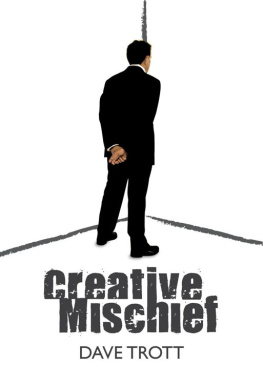

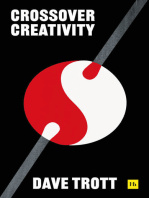





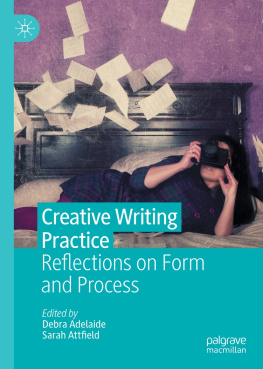
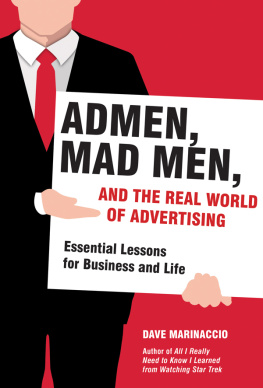
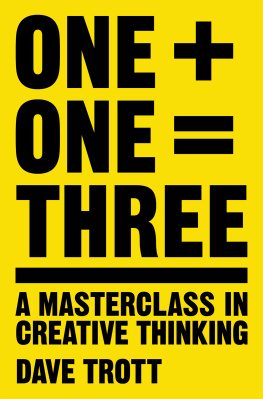

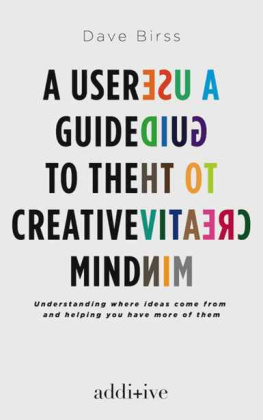
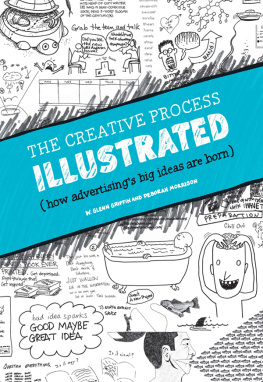
 Published by LOAF Marketing Ltd 63 Long Acre, Covent Garden London WC2E 9JN Tel ++44 (0)207 212 9940 www.loafmarketing.co.uk All enquiries david@loafmarketing.co.uk First published 2009 Copyright Dave Trott 2009 The right of Dave Trott to be identified as author of this work has been asserted by him in accordance with the Copyright, Designs and Patents Act 1988. All rights reserved. Without limiting the rights under copyright reserved above, no part of this publication may be reproduced, stored in or introduced into a retrieval system, or transmitted, in any form or by any means (electronic, mechanical, photocopying, recording or otherwise), without prior written permission of both the copyright owner and the above publisher of this book except in accordance with the provisions of the Copyright Designs and Patents Act 1988. Any unauthorised or restricted act in relation to this publication may result in civil proceedings and / or criminal prosecution. This book may not be lent, resold, hired out or otherwise disposed of by way of trade in any form of binding or cover other than that in which it is published, without prior consent of both the copyright owner and the publishers. The views expressed in this publication should be taken as those of the author alone.
Published by LOAF Marketing Ltd 63 Long Acre, Covent Garden London WC2E 9JN Tel ++44 (0)207 212 9940 www.loafmarketing.co.uk All enquiries david@loafmarketing.co.uk First published 2009 Copyright Dave Trott 2009 The right of Dave Trott to be identified as author of this work has been asserted by him in accordance with the Copyright, Designs and Patents Act 1988. All rights reserved. Without limiting the rights under copyright reserved above, no part of this publication may be reproduced, stored in or introduced into a retrieval system, or transmitted, in any form or by any means (electronic, mechanical, photocopying, recording or otherwise), without prior written permission of both the copyright owner and the above publisher of this book except in accordance with the provisions of the Copyright Designs and Patents Act 1988. Any unauthorised or restricted act in relation to this publication may result in civil proceedings and / or criminal prosecution. This book may not be lent, resold, hired out or otherwise disposed of by way of trade in any form of binding or cover other than that in which it is published, without prior consent of both the copyright owner and the publishers. The views expressed in this publication should be taken as those of the author alone. ISBN 978-0-9564357-0-5 Introduction For me there are two requirements from anything I read. I have to learn something. Or I have to be entertained. If Im not getting either of those two, why would I keep reading? The best advertising works because its creative.
ISBN 978-0-9564357-0-5 Introduction For me there are two requirements from anything I read. I have to learn something. Or I have to be entertained. If Im not getting either of those two, why would I keep reading? The best advertising works because its creative.